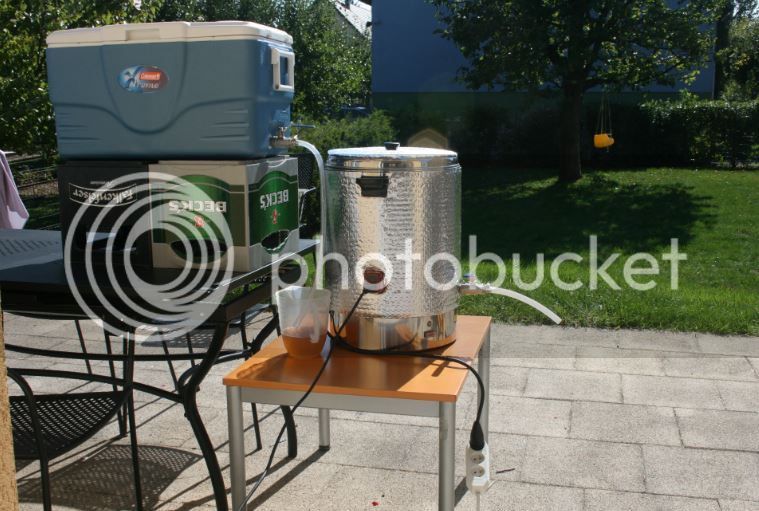Fore
Landlord.
AG#2: Cascade APA. Created my recipes in BrewMate quite some time ago, and no longer sure where I picked this one up. It has Magnum as the bittering hop.
Went much smoother for #2. No rain, no breakages, targets better hit (if not perfect). No stuck mash; very very fast to draw in fact. New brew table, a work give-away, is very sturdy. Buffalo didn't cut out. Only a small leak on my HLT to sort out. I resized my tubing so I only have the lengths I need. Ended up with 1 litre too much into the boiler, then only 0.5 litre too much at end of boil, then 1.5 litre too little into fermenter. Was aiming for 1.051 and hit 1.047 with 73% efficiency set. A bit disappointed with that. Might have to look again at the mill gap given 0.9 was stuck mash, and 1.1 absolutely flew out. So some tweaking then to get me even closer for AG#3.
Would mill speed play a role in the crushed grain profile? I ask because for AG#1 I had no idea what I was doing and ran the drill at full blast. This time I did it as slow as it would go. Could speed in itself have played a role in my efficiency? Could I go back to 0.9?

Went much smoother for #2. No rain, no breakages, targets better hit (if not perfect). No stuck mash; very very fast to draw in fact. New brew table, a work give-away, is very sturdy. Buffalo didn't cut out. Only a small leak on my HLT to sort out. I resized my tubing so I only have the lengths I need. Ended up with 1 litre too much into the boiler, then only 0.5 litre too much at end of boil, then 1.5 litre too little into fermenter. Was aiming for 1.051 and hit 1.047 with 73% efficiency set. A bit disappointed with that. Might have to look again at the mill gap given 0.9 was stuck mash, and 1.1 absolutely flew out. So some tweaking then to get me even closer for AG#3.
Would mill speed play a role in the crushed grain profile? I ask because for AG#1 I had no idea what I was doing and ran the drill at full blast. This time I did it as slow as it would go. Could speed in itself have played a role in my efficiency? Could I go back to 0.9?





